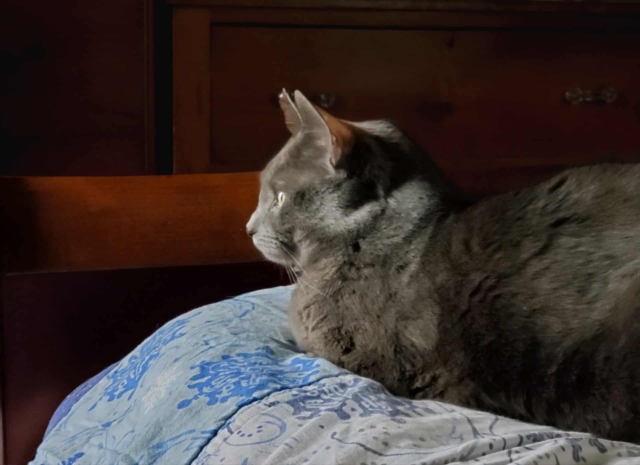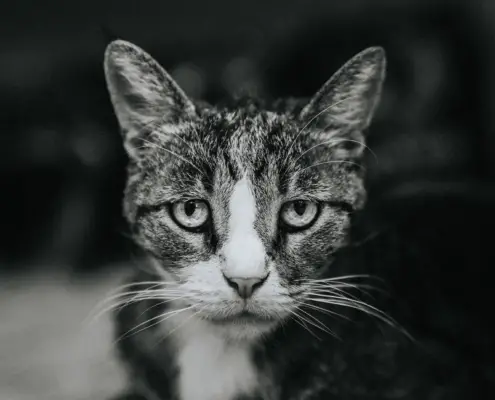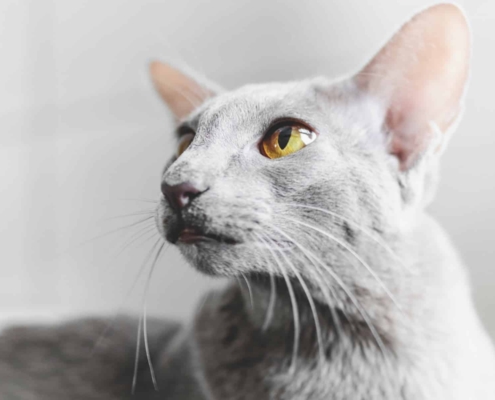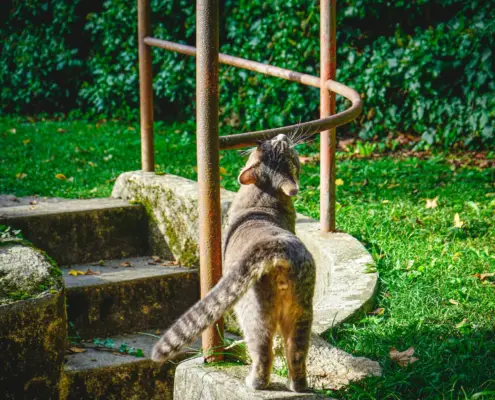
Cats have long been known for their mysterious and enigmatic nature. While they may not be able to speak our language, they have their own unique ways of communicating with us and with each other. One of the most fascinating aspects of feline communication is the purr. In this article, we will delve into the world of cats and explore the intricacies of purring, uncovering its meaning and significance.
What is Purring and Why Do Cats Do It?
Purring is a low, vibrating sound that cats produce. It is a form of vocalization that is exclusive to felines. Cats purr for various reasons, and it is not limited to just one emotion or situation. While we often associate purring with contentment and relaxation, cats may also purr when they are anxious, in pain, or seeking attention. Understanding the reasons behind a cat’s purring can provide valuable insights into their emotional state and overall well-being.
The Science Behind a Cat’s Purr
The mechanism behind a cat’s purr is quite fascinating. It is believed that the laryngeal muscles, located in the throat of a cat, rapidly contract and relax, causing the vocal cords to vibrate. These vibrations produce the distinctive sound we recognize as a purr. The frequency of a cat’s purr typically ranges between 25 and 150 Hertz, which interestingly, falls within the range of frequencies that can promote healing and relaxation in humans. This may explain why interacting with a purring cat often has a calming effect on us.
Different Types of Purring and Their Meanings
Not all purrs are created equal. Cats have different types of purring that can convey various meanings. For example, a soft and gentle purr usually indicates contentment and relaxation. On the other hand, a deep and loud purr may suggest excitement or anticipation. It is important to pay attention to the context and accompanying body language to better understand the message a cat is trying to convey through their purring. Each cat may have their own unique purring style, so it is essential to become familiar with your cat’s individual purring patterns.
Understanding a Cat’s Body Language While Purring
While the purring itself provides valuable information, understanding a cat’s body language while they purr can offer even deeper insights into their emotions and intentions. A cat’s body language includes cues such as the position of their ears, tail, and whiskers, as well as their overall posture. For instance, if a cat is purring while their tail is erect and their ears are forward, it is likely a sign of happiness and contentment. Conversely, if a cat is purring while their tail is puffed up and their ears are flattened, it may indicate fear or aggression. Being able to read a cat’s body language alongside their purring can help us decipher their true feelings.
How to Interpret a Cat’s Purring
Interpreting a cat’s purring requires observation, patience, and an understanding of their unique personality. It is crucial to consider the context and the accompanying body language. For instance, if a cat is purring while snuggling close to you, it is a clear display of affection and trust. On the other hand, if a cat is purring while being approached by a stranger, it may be a sign of nervousness or discomfort. By being attuned to a cat’s purring and their overall behavior, we can better respond to their needs and ensure their well-being.
Common Misconceptions About Cat Purring
There are several common misconceptions about cat purring that need to be addressed. One of them is the assumption that all purring is a sign of happiness. While purring can indeed indicate contentment, cats may also purr when they are stressed, anxious, or in pain. It is essential not to solely rely on purring as an indicator of a cat’s emotional state. Additionally, some people believe that only domestic cats purr, but this is not true. Purring is a trait that is shared by many wild cat species as well.
Other Ways Cats Communicate Besides Purring
While purring is a significant aspect of feline communication, it is not the only way cats express themselves. Cats use a combination of vocalizations, body language, and scent marking to communicate their needs, desires, and emotions. Meowing, hissing, growling, and chirping are just a few examples of the wide range of vocalizations cats employ to communicate. Understanding these different forms of communication can help us build stronger bonds with our feline companions and ensure their well-being.
Tips for Strengthening the Bond with Your Cat Through Communication
Building a strong bond with your cat is essential for their overall happiness and well-being. Effective communication plays a vital role in fostering this bond. Here are some tips to strengthen your bond with your cat through communication:
- Take the time to observe and understand your cat’s unique purring patterns and body language.
- Engage in interactive play sessions to build trust and create positive associations.
- Use positive reinforcement techniques to reward desired behaviors and discourage unwanted ones.
- Provide a safe and enriched environment that caters to your cat’s natural instincts.
- Maintain regular veterinary check-ups to ensure your cat’s physical and emotional health.
By implementing these tips, you can create a deeper and more meaningful connection with your feline companion.
Conclusion
Decoding feline communication, particularly the intriguing world of purring, allows us to better understand our cats and meet their needs. Purring is a multifaceted form of communication that can convey various emotions and intentions. By paying close attention to a cat’s purring, observing their body language, and being attuned to their overall behavior, we can establish a strong and harmonious relationship with our feline friends. So the next time you hear your cat purring, take a moment to appreciate the complexity of their communication and respond accordingly.
If you enjoyed my article, I would appreciate you sharing it with your network.

Sima Ndlebe
Sima writes for CatBuzz. He is interested in Cats, Health and Fitness, and Entrepreneurship.
Published: 6 December 2023




